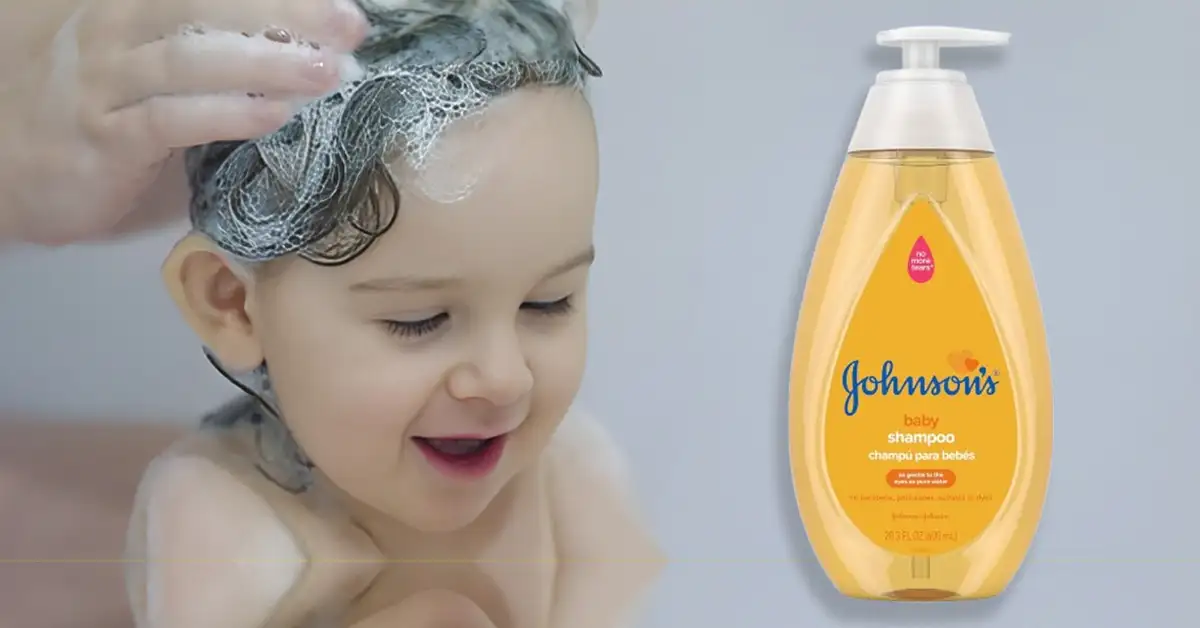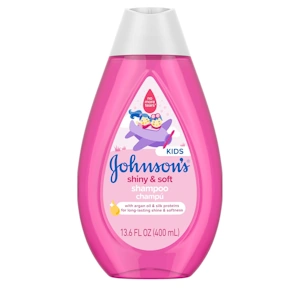
Johnson’s Shiny & Soft Kids’ Shampoo with Argan Oil & Silk Proteins
Check Price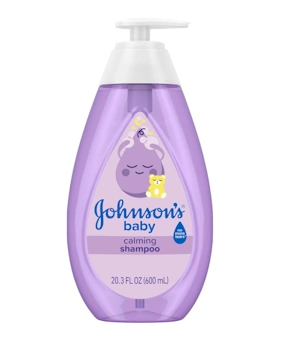
Johnson’s Baby Calming Shampoo with Soothing NaturalCalm Aromas
Check PriceIs Johnson’s Baby Shampoo Safe? The safety of Johnson’s Baby Shampoo has been widely debated, and the answer depends on what aspects you’re concerned about. According to the company, today’s formula is designed to be gentle and safe for newborns, free from formaldehyde, parabens, sulfates, and dyes.
However, independent reviews and consumer discussions have raised additional questions about potential allergens, endocrine-disrupting ingredients, and how suitable the shampoo is for adults, especially due to its neutral pH, which some experts say can be too alkaline for adult hair over time.
Johnson’s maintains that its baby shampoo is hypoallergenic, tear-free, and clinically tested by pediatricians, with a rigorous safety process behind it. Still, outside sources highlight concerns such as possible allergenic ingredients, limited cleansing power for adults, and past findings of formaldehyde in older formulations.
While the current formula is significantly cleaner, the mixed opinions make many shoppers wonder whether Johnson’s Baby Shampoo is the safest choice for babies, adults, or anyone with sensitive skin.
This article breaks down the evidence, concerns, and official claims so you can make an informed decision.
Table of Contents
Johnson Baby Shampoo Review
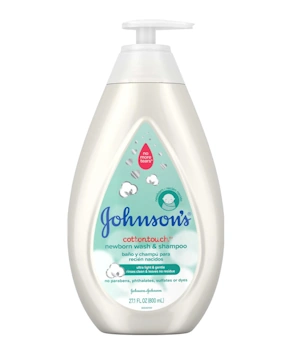
Johnson’s CottonTouch Shampoo with No More Tears
Check Price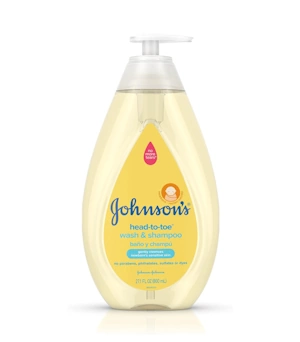
Johnson’s Head-to-Toe Gentle Tear-Free Baby & Newborn Wash & Shampoo
Check PriceJohnson’s Baby Shampoo is widely praised for its gentle, tear-free formula, making it a trusted choice for babies and even adults with sensitive skin. Parents appreciate how mild it is, how well it cleans, and how soft it leaves the hair. Still, it may not be perfect for every hair type, especially for adults who need deeper cleansing.
Positive Aspects
Gentle formula:
The well-known “No More Tears” formula is very gentle on the eyes and skin, making it ideal for babies and anyone with a sensitive scalp.
Effective cleaning:
It removes dirt and everyday buildup while keeping hair soft and easy to manage.
Light, pleasant scent:
Many users enjoy its classic, fresh fragrance that isn’t too strong.
Suitable for adults:
Adults with sensitive or dry hair can use it, especially when they want something mild. It’s also good as an occasional clarifying wash to remove buildup.
Good value:
It’s affordable and often lasts a long time because a small amount is enough for each wash.
Hypoallergenic:
The formula is pH-balanced and designed to minimize irritation.
Potential Drawbacks
Can feel oily for some hair types:
A few users, especially adults with fine or oily hair, say it can leave their hair feeling heavy or greasy.
Scent preferences vary:
While many love the scent, some people find it too mild or not appealing.
Not ideal for daily adult use:
For adults with oily hair, using it every day may not be effective and can sometimes lead to dryness.
Mixed user experiences:
There are occasional reports of negative results like dryness or hair loss, but these are uncommon and not widely repeated.
How to Use for Different Hair Types
For babies:
Safe, mild, and suitable for daily use. It keeps baby hair clean, soft, and gentle on the scalp.
For adults with sensitive scalps:
Best used occasionally, like once or twice a week, to clean buildup without irritation. Not recommended as a daily shampoo for oily hair.
Johnson Baby Shampoo price
The price of Johnson’s Baby Shampoo varies by retailer and size. As of 2025, a common size like 13.6 fl oz typically costs around $4.78 at major retailers, while other sizes are also available.
Online Retailers and Pricing
Prices can differ based on current deals or pack sizes. Here are some examples of where you can find Johnson’s Baby Shampoo online and the general cost:
| Merchant | Product Description | Price |
|---|---|---|
| Walmart | Johnson’s Baby Shampoo Tear-Free, Hypoallergenic Formula, 13.6 fl oz | $4.78 |
| Amazon.com | Johnson’s Baby Shampoo with Aloe Vera & Vitamin B5, Tear Free, 13.6 fl oz | $4.06 |
| Amazon.ca | Johnson’s Baby Shampoo, Calming Shampoo, Paraben Free, 600 ml | $6.77 |
| Amazon.in | Johnson’s Baby No More Tears Baby Shampoo, 500ml | ₹326.15 ~~~₹500.00~~ |
Best Johnson Baby Shampoo
The best Johnson’s Baby Shampoo really depends on what you need, but the classic Johnson’s Baby No More Tears Shampoo (the yellow bottle) is the most popular option thanks to its ultra-gentle, tear-free formula. Other versions are designed to support specific hair needs, like extra shine or calming scents for bedtime.
Top Johnson’s Baby Shampoo Picks
When it comes to caring for delicate infant skin, the best choices from Johnson’s are usually the Original Baby Oil and the Baby Oil with Vitamin E. Both formulas are clinically tested, hypoallergenic, and designed to lock in moisture without irritating sensitive skin. Many parents also love Johnson’s Cottontouch Baby Massage Oil, which is specially created for newborns and extremely gentle.

1- Johnson’s Baby No More Tears Shampoo
The most iconic and widely trusted choice. Parents love it for its mild, hypoallergenic, tear-free formula that cleans effectively without irritating the scalp.
It’s suitable for babies and even adults with sensitive skin, making it a perfect everyday shampoo.

2- Johnson’s Head-To-Toe Baby Body Wash & Shampoo
A versatile 2-in-1 wash that simplifies bath time. It’s gentle enough for newborns and works as both a body wash and shampoo.
Ideal for parents who want a convenient all-in-one cleanser for baby’s delicate skin and hair.

3- Johnson’s Shiny & Soft Kids’ Shampoo
Formulated for children’s growing hair, this shampoo includes argan oil and silk proteins to boost shine and softness.
It also helps reduce tangles, making combing easier and less stressful.

4- Johnson’s Baby Calming Shampoo
Infused with NaturalCalm aromas, soft floral and powdery notes, this shampoo is designed for a relaxing bedtime routine.
It’s a great option for parents looking to create a soothing, sleep-friendly bath experience.
Key Takeaway
For everyday gentle cleansing, the No More Tears Shampoo remains the top go-to. If you prefer a single product for both hair and body, choose Head-to-Toe. For targeted needs like added shine or a calming scent, Shiny & Soft or Calming Shampoo are excellent alternatives. All current Johnson’s shampoos are free from sulfates, parabens, phthalates, and dyes.
The History of Johnson’s Baby Shampoo

Johnson’s CottonTouch Shampoo with No More Tears
Check Price
Johnson’s Head-to-Toe Gentle Tear-Free Baby & Newborn Wash & Shampoo
Check PriceYou’ve seen the yellow bottle, maybe on your baby’s shelf or even from your own childhood. Johnson’s Baby Shampoo has been around since 1953. For many families, it’s been a trusted favorite for generations.
But just because something feels familiar doesn’t always mean it’s perfect.
Why Some Parents Got Worried
A few years back, concerns started popping up. Some parents and health groups raised questions about the older formulas. You may have heard words like:
- Formaldehyde-releasing preservatives
- Parabens
- Phthalates
These are chemicals that worried many parents, especially those with babies who have sensitive skin or allergies. Some families simply preferred more natural, gentle products.
At the time, Johnson & Johnson came under pressure. Groups like the Campaign for Safe Cosmetics and many parents spoke up. And the truth is, when it comes to baby care, trust matters.
The Big Reformulation
In response, Johnson & Johnson made big changes. By 2014, they began to update their baby care line, including the shampoo, and removed many of the ingredients that had caused concern.
Here’s what they took out:
- Formaldehyde-releasing preservatives (like quaternium-15)
- Parabens
- Phthalates
- Dyes and sulfates (in most new formulas)
They kept ingredients that are backed by science and reviewed by doctors. Labels also got clearer, which helped parents feel more confident when choosing what to use.
Why This Matters Today
Knowing the past helps us understand the present. Today’s Johnson’s formula is not the same as it once was. But if you’re still unsure, it may be because of those older headlines or past concerns.
So let’s take the next step, and look at what’s actually inside the bottle now. We’ll see if it really holds up to the promise of being gentle enough for a newborn.
What’s Inside the Bottle Today?

Johnson’s Shiny & Soft Kids’ Shampoo with Argan Oil & Silk Proteins
Check Price
Johnson’s Baby Calming Shampoo with Soothing NaturalCalm Aromas
Check PriceSo, what’s actually in Johnson’s Baby Shampoo now? The short answer: it’s much cleaner and gentler than it used to be. Johnson & Johnson removed many of the old, worrisome ingredients. What’s left is a mix of soft cleansers, conditioners, and skin-safe additives.
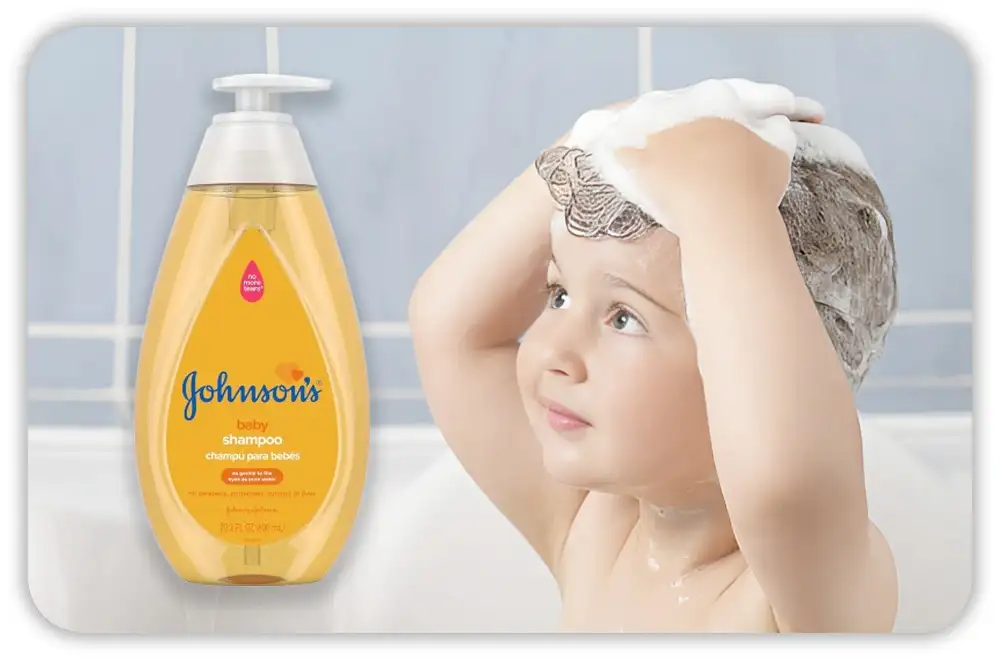
Let’s break it down, no science degree needed.
Johnson Baby Shampoo ingredients list (Plain & Simple)
Here are a few ingredients you’ll find on the label, and what they do:
- Cocamidopropyl Betaine: A coconut-based cleanser. It helps the shampoo foam up and wash away oil and dirt.
- PEG-80 Sorbitan Laurate: Helps water mix with oil so everything rinses out smoothly.
- Sodium Trideceth Sulfate: A gentle cleaning agent. It cleans hair without drying it out too much.
- Glycerin: A moisturizer that helps lock in softness. It keeps your baby’s skin from feeling dry.
- Fragrance: Adds that classic baby smell. Many parents love it, but it may not suit very sensitive skin.
Good to know: Most new versions are paraben-free, phthalate-free, sulfate-free, and dye-free.
Ingredients Johnson’s Removed, and Why
A big part of what makes the shampoo safer is what’s not in it anymore:
- No formaldehyde-releasing preservatives
- No parabens
- No phthalates
- No harsh sulfates (like SLS or SLES)
- No artificial dyes
These updates weren’t just to look good on a label. They came after real concerns from parents, tighter rules, and the growing demand for cleaner baby care in the U.S.
But What About the Fragrance?
This is still a question for many moms. The scent is soft, but “fragrance” on a label can mean a mix of many ingredients. Johnson’s says their scents are tested for safety and checked for allergens. But if your baby has very sensitive skin, this might still be something to watch.
Mom tip: When my daughter had cradle cap, I switched to a fragrance-free baby wash for a few weeks, and it helped. Once her skin cleared up, we went back to Johnson’s without any issues.
Is Johnson’s Baby Shampoo Safe for Babies and Toddlers?

Johnson’s Shiny & Soft Kids’ Shampoo with Argan Oil & Silk Proteins
Check Price
Johnson’s Baby Calming Shampoo with Soothing NaturalCalm Aromas
Check PriceLet’s get right to it: Yes, Johnson’s Baby Shampoo is safe for most babies, especially with the new formula. But like all things baby-related, it depends on your child’s skin, any sensitivities, and what feels right to you.
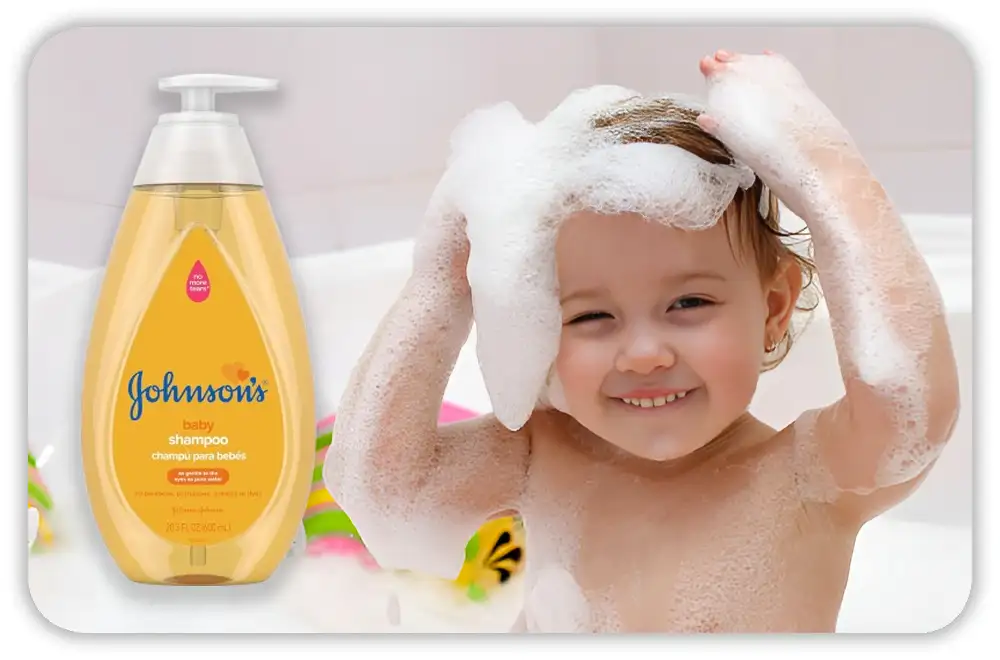
Is It Dermatologist-Approved?
Yes. The new formula has been:
- Tested by pediatricians and dermatologists
- Labeled hypoallergenic
- Made without parabens, phthalates, and sulfates
That means it’s made to be gentle on delicate skin, even for newborns in most cases.
I used it for my daughter’s very first bath. Knowing it was checked by baby care experts helped me feel calm. And that tear-free claim? A lifesaver when you’re washing a wiggly baby.
What Does “Tear-Free” Really Mean?
It doesn’t mean no tears ever, but here’s the deal:
The shampoo’s pH is close to natural tears. That means it’s less likely to sting if a little gets in your baby’s eyes.
In my case, my daughter barely fussed when some shampoo slid down her face. That made bath time way less stressful.
Will It Work for My Baby’s Skin?
Here’s a quick guide based on skin type:
- Normal Skin: Cleans gently without drying.
- Dry or Sensitive Skin: The newer formula is softer, but the fragrance may still be a trigger for some.
- Eczema-Prone: You may want to do a patch test or try a fragrance-free option first.
From my own life: In the winter, my daughter’s cheeks got red and dry. I paused Johnson’s and used an oat-based wash for a week. Her skin calmed down, and we switched back without a problem.
Common Questions, Answered
Is Johnson’s Baby Shampoo toxic?
No. The updated version has no formaldehyde, parabens, or known toxins. It meets current safety standards.
Can I use Johnson’s on newborns?
Yes. Johnson & Johnson says it’s safe from birth. But some parents (like me) wait a few weeks or use plain water at first. Ask your pediatrician if you’re unsure.
Bottom Line:
- For most babies, Johnson’s is a safe, trusted shampoo.
- Want peace of mind? Do a quick patch test before using it fully.
Next up, let’s see what the experts say, from doctors to EWG ratings, to help you feel even more confident.
Pediatrician and Dermatologist Perspectives
You’ve heard my take, now let’s see what the experts say. Because when it comes to baby skin, we want more than just “it smells nice.” We want real safety and science to back it up.
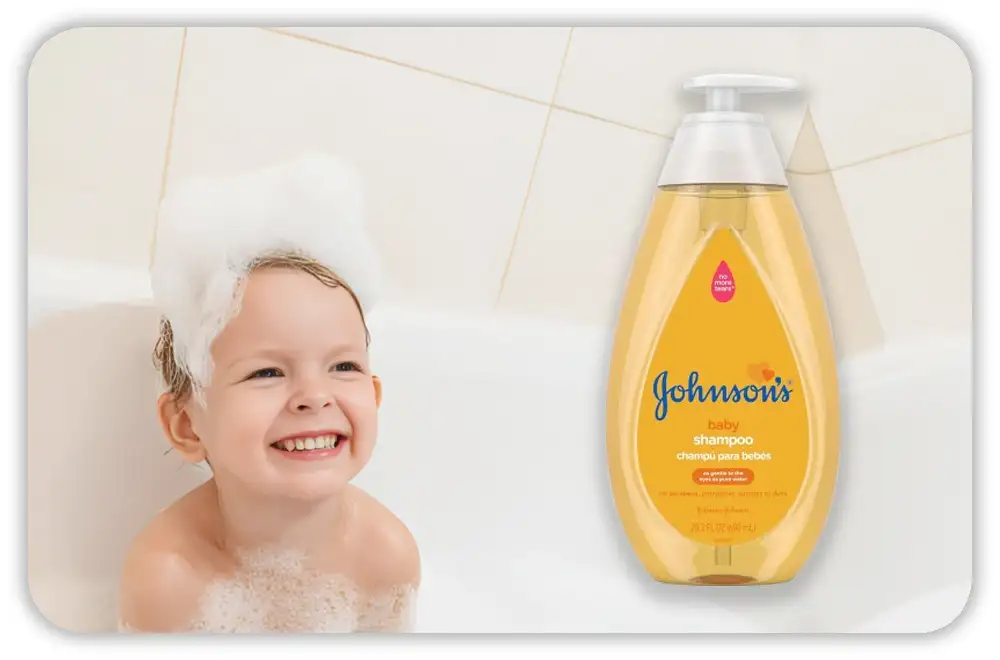
What Do Doctors Say About Johnson’s?
Most pediatricians and baby skin specialists still say yes to Johnson’s, especially the newer formula.
Here’s why they approve:
- Hypoallergenic: It’s made to lower the risk of allergic reactions.
- Clinically tested: It’s been reviewed by doctors and skin experts for use on baby skin.
- No harsh chemicals: Parabens, sulfates, and phthalates are no longer in the mix.
In my case, our pediatrician gave us the green light. She said it was safe for daily use, as long as our daughter didn’t show any skin issues. That peace of mind meant everything when I was a tired new mom trying to do the right thing.
What’s the EWG Rating?
If you’re like me and love checking the Environmental Working Group (EWG) site, here’s what to know:
Johnson’s Baby Shampoo usually scores a 3–4 on their scale. (0 is best, 10 is worst.)
That’s a moderate rating, mostly because of the fragrance.
Heads-up: EWG often rates scented products lower, even if they’re safe in other ways. So if your baby is extra sensitive or you want to play it super safe, a fragrance-free option may be better.
Red Flags for Sensitive Skin
Even gentle products can sometimes cause a reaction, especially if your baby has:
- Eczema
- Dry patches or cradle cap
- Fragrance sensitivity
Here’s what skin experts usually suggest:
- Patch test: Try a small spot behind the ear first.
- Less is more: You don’t need to shampoo daily. Two to three times a week is fine.
- Switch if needed: If something feels off, it’s okay to try a different product.
From my story: When my daughter had dry skin flares, our pediatric skin doctor told us to switch to an oat-based, scent-free wash. It helped a lot. Later, we went back to Johnson’s, no problems after that.
Takeaway:
- Most doctors agree Johnson’s is safe for healthy babies.
- The newer formula is gentler and tested by experts.
- But every baby is different, so trust your gut and your pediatrician.
Real Mom Reviews: My Experience & Community Voices
Let’s be honest, sometimes the best advice doesn’t come from a label. It comes from another mom who’s been there.
Here’s how Johnson’s Baby Shampoo worked in my own home, plus what other moms I know (and follow online!) are saying.
Our Johnson’s Story
I used Johnson’s on my daughter from her first real bath. It lathered well, rinsed off fast, and made her hair super soft. That sweet baby smell? It melted my heart every single time.
But after a few months, her skin got dry. It was winter, and we were using a space heater. I noticed red spots on her scalp. I wondered, was the shampoo drying her skin? Or maybe the scent was too much?
So we hit pause. I tried a fragrance-free, oat-based baby wash for a few weeks. Her skin cleared up fast. Then we slowly went back to Johnson’s, and had no problems since.
Other Moms Weigh In
I asked moms in my parenting group, and here’s what they shared:
What moms love:
- Easy to find at Target, Walmart, and most stores
- Budget-friendly
- Gentle enough for daily baths
- Tear-free, so less fuss
- That nostalgic baby scent
What some moms avoid:
- The “fragrance” label still raises concerns
- Not the best fit for babies with eczema
- Some prefer plant-based or organic for peace of mind
Bottom Line
- If your baby’s skin is happy, it’s likely safe to keep using.
- If you notice dryness, redness, or a rash, switching to a gentler wash might help.
Up next, I’ll share a few safer alternatives. Because sometimes, just knowing your options is enough to feel more confident as a parent.
Safer Alternatives (If You Want Something Cleaner)
Sometimes, even when you like a brand like Johnson’s, you may want to try something new. Maybe your baby has sensitive skin. Maybe you just want a gentler or more natural option. Good news, there are lots of safe baby shampoos to try!
Here are some top picks moms love, with quick pros and cons to help:
Aveeno Baby Shampoo & Wash
- Pros: Gentle, no fragrance, good for dry or eczema-prone skin
- Cons: Costs more than basic brands, not super foamy
Burt’s Bees Baby Shampoo & Wash
- Pros: Natural ingredients, light scent, safe for most babies
- Cons: Has some fragrance, not ideal for very sensitive skin
Mustela Gentle Shampoo
- Pros: Made for newborns, plant-based, tested by experts
- Cons: More expensive, contains fragrance
Earth Mama Calendula Baby Wash
- Pros: Organic, fragrance-free version available, soothes dry skin
- Cons: Not very foamy, scent may feel strong to some
Pipette Baby Shampoo + Wash
- Pros: Clean ingredients, super gentle, good for allergies
- Cons: Harder to find in stores, a bit pricey
Why Some Parents Pick Fragrance-Free or Plant-Based
Fragrance can be tricky. It smells nice but might cause rashes or dryness for some babies. That’s why many parents go with fragrance-free or plant-based washes. They’re simple, soft on the skin, and often safer for daily use.
Plant-based shampoos also use things like aloe, coconut, or calendula. These help keep your baby’s skin soft and calm, especially during dry or cold seasons.
The truth? No one product fits every baby. It’s okay to try a few and see what works best for your little one.
Next up, I’ll share simple tips to help you choose the safest shampoo, so bath time stays sweet and stress-free.
How to Pick a Safe Baby Shampoo
Picking a shampoo for your baby can feel like a lot. I’ve been there too. You just want something safe and gentle. Here’s the simple list I use (and you can too!) when choosing a shampoo for little ones.
What to Look for:
- No harsh stuff: Stay away from parabens, phthalates, sulfates (like SLS), or anything that releases formaldehyde.
- Hypoallergenic: This means it’s less likely to cause a rash.
- Fragrance-free or light scent: Best for sensitive or dry skin.
- Tear-free: No more bath time tears (at least from the shampoo!).
- Short ingredient list: The simpler, the better.
Do a Patch Test First
Before using a new shampoo, test it on a small spot. Here’s how:
- Dab a tiny bit behind your baby’s ear or on their arm.
- Wait 24 hours.
- If there’s no redness or rash, you’re good to go.
This helped me feel safe before trying anything new, and it might help you too.
How Often Do You Need to Shampoo?
Here’s a tip: babies don’t need shampoo every day. Their skin is soft and not very oily.
- 2 to 3 times a week is enough for most babies.
- If your baby has cradle cap or flakes, gentle washing helps, but don’t overdo it.
- On other days, a quick rinse with water works fine.
Every baby is different. What works for one might not work for another, and that’s okay! Try things out. Trust your gut. You’ll know what feels right for your baby.
Final Verdict: Is Johnson’s Baby Shampoo Safe?

Johnson’s CottonTouch Shampoo with No More Tears
Check Price
Johnson’s Head-to-Toe Gentle Tear-Free Baby & Newborn Wash & Shampoo
Check PriceSo, what’s the bottom line? For most babies, yes, Johnson’s Baby Shampoo is safe and gentle enough.
Here’s why I feel okay using it: Johnson & Johnson listened to parents and experts. They removed harsh stuff like parabens, phthalates, sulfates, and formaldehyde releasers. The shampoo is now hypoallergenic and tested by pediatricians and skin doctors. It’s made to be mild for baby skin.
When It’s Fine to Use Johnson’s:
- Your baby has normal or somewhat sensitive skin
- You want a trusted, easy-to-find shampoo with a soft scent
- A patch test shows no redness or rash
- You don’t use it every day if skin gets dry
When You Might Want to Pause or Skip:
- Your baby has eczema, allergies, or very sensitive skin
- You notice dryness or a rash after use
- You prefer plant-based or scent-free products
For me, Johnson’s worked great when my daughter was tiny. But in winter, her skin got dry, so I paused and used a gentle, scent-free wash. Later, we went back to Johnson’s without any problems.
Every baby is different. What works for one might not work for another, and that’s okay. Trust yourself, talk to your pediatrician, and don’t stress if you try a few shampoos before finding the right one.
At the end of the day, your love and care matter most. You’ve got this.
FAQ: Is Johnson’s Baby Shampoo Safe?
Is Johnson’s Baby Shampoo safe for newborns?
Yes, Johnson’s Baby Shampoo is safe for newborns. It’s tested by pediatricians and made without harsh chemicals like parabens or sulfates.
Is Johnson’s Baby Shampoo toxic?
No, it’s not toxic. Johnson & Johnson removed formaldehyde releasers, parabens, and phthalates from the formula years ago for safer use.
Can I use Johnson’s Baby Shampoo every day?
Yes, but it’s best used 2–3 times a week. Overwashing can dry out a baby’s skin, especially in colder months or with sensitive skin.
Is Johnson’s Baby Shampoo sulfate-free?
Most newer versions are sulfate-free. Always check the label to be sure, especially if your baby has dry or sensitive skin.
Why do some parents avoid Johnson’s Baby Shampoo?
Some avoid it due to the “fragrance” label or past ingredient concerns. If your baby has eczema or allergies, you might prefer a scent-free option.

